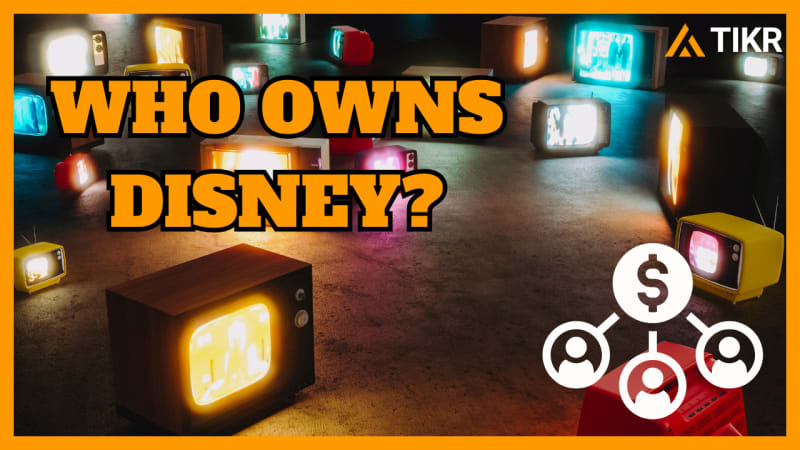The Walt Disney Company (NYSE: DIS), the global entertainment leader behind Marvel, Pixar, Star Wars, ESPN, and its world-famous theme parks, operates across film, television, streaming, resorts, and consumer products. Its broad portfolio makes Disney one of the most diversified and influential media companies on the planet.
Recently trading at $116.64 with a market cap of $209.7B, the stock is up 36.3% in the past year, driven by record park attendance, streaming cost cuts, and stronger-than-expected content performance. Still, the company faces challenges balancing streaming profitability with traditional TV declines, rising sports rights costs, and fierce competition from Netflix, Amazon, and other platforms.
For investors, Disney’s appeal lies in its combination of global brand power, recurring revenue from parks and media, and the potential to unlock higher margins in streaming. But success will depend on management’s ability to execute its growth strategy while adapting to a rapidly evolving entertainment landscape.
Who are Disney’s top shareholders?

Track the top shareholders of over 50,000 global stocks (It’s free) >>>
Disney’s stock is anchored by large institutional investors, with passive index funds holding the largest stakes.
- Vanguard Group – 156.68M shares (8.71%), $18.28B value, +1.62M shares last quarter
- BlackRock Institutional Trust – 79.30M shares (4.41%), $9.25B value, -1.44M shares
- State Street Global Advisors – 79.02M shares (4.39%), $9.22B value, +1.05M shares
- Geode Capital – 39.99M shares (2.22%), $4.66B value, +458K shares
- JP Morgan Asset Management – 37.00M shares (2.06%), $4.31B value, +17.12M shares
Fidelity cut its stake by 5.81M shares (-21.5%), while Norges Bank reduced by 578K shares (-2.67%).
Passive giants like Vanguard, BlackRock, and State Street control over 17% of Disney, making the stock a core holding in global index funds.
This level of passive ownership tends to provide stability because these positions are tied to index weightings rather than short-term sentiment. However, it also means the share price can be influenced heavily by broader market moves, particularly during index rebalancing or ETF flows.
The large stake increase by JP Morgan reflects renewed confidence from an active manager that may see further upside potential, while the notable reduction by Fidelity and trimming from Norges Bank suggest that some investors are locking in gains after the rally.
For investors, watching shifts among these top holders can help identify when sentiment from major funds is turning more bullish or cautious.
See whether Disney’s top shareholders are buying or selling today >>>
Disney’s Recent Insider Trades

Insider activity over the past few months has been small in scale and could be linked to scheduled trading plans or equity grants:
- Brent Woodford (Executive VP) reported selling 1,147 shares at ~$121 and 1,930 shares at ~$119, along with similar-sized acquisitions.
- Sonia Coleman (CHRO) reported a sale and purchase of 1,167 shares on the same day.
- Kristina Schake (EVP, Communications) reported selling 3,675 shares in June 2025, followed by an acquisition of the same amount.
These trades are small relative to each executive’s total holdings, which may point to administrative or pre-planned transactions rather than strategic buying or selling.
The lack of significant insider buying might indicate that management views the current share price as close to fair value, not a deep bargain. However, the absence of large-scale selling suggests executives remain aligned with the company’s long-term direction.
For investors, this pattern is generally neutral, with no strong signal of undervaluation from insiders but also no evidence that leadership is losing confidence in Disney’s ability to execute on its growth plans.
See recent insider trade data for over 50,000 global stocks (It’s free) >>>
What the Ownership & Insider Trade Data Tell Us
Disney’s ownership is dominated by stable, long-term capital from major index funds, with mixed activity among active managers. For investors, this means the shareholder base is unlikely to change rapidly, which can help dampen volatility during market swings. However, sentiment could shift if large active holders adjust their positions in response to streaming profitability trends, park attendance levels, or shifts in media consumption.
With the stock’s strong run in the past year, further upside may depend on management delivering on streaming margin improvements and successfully navigating challenges in its legacy TV business.
For investors, this creates a “prove-it” phase where Disney must back up recent share price gains with consistent earnings growth. Monitoring both institutional positioning and insider sentiment could offer early signals of where Disney’s valuation might head next.
If active managers begin increasing positions and insiders show signs of accumulation, it could indicate growing conviction that Disney’s transformation strategy is on track. Conversely, sustained selling by these groups might point to concerns over execution or valuation.
Wall Street Analysts Are Bullish on These 5 Undervalued Compounders With Market-Beating Potential
TIKR just released a new free report on 5 compounders that appear undervalued, have beaten the market in the past, and could continue to outperform on a 1-5 year timeline based on analysts’ estimates.
Inside, you’ll get a breakdown of 5 high-quality businesses with:
- Strong revenue growth and durable competitive advantages
- Attractive valuations based on forward earnings and expected earnings growth
- Long-term upside potential backed by analyst forecasts and TIKR’s valuation models
These are the kinds of stocks that can deliver massive long-term returns, especially if you catch them while they’re still trading at a discount.
Whether you’re a long-term investor or just looking for great businesses trading below fair value, this report will help you zero in on high-upside opportunities.
Click here to sign up for TIKR and get our full report on 5 undervalued compounders completely free.

